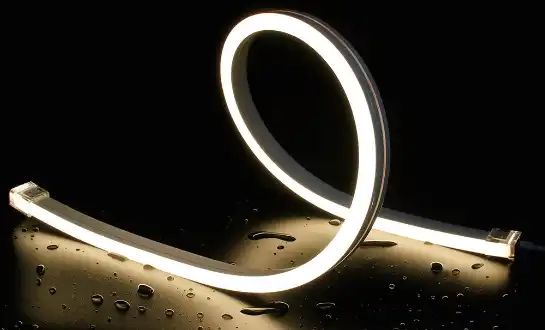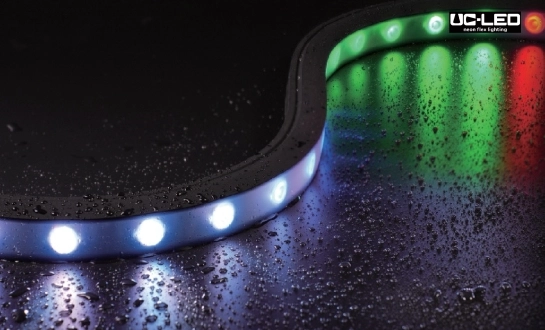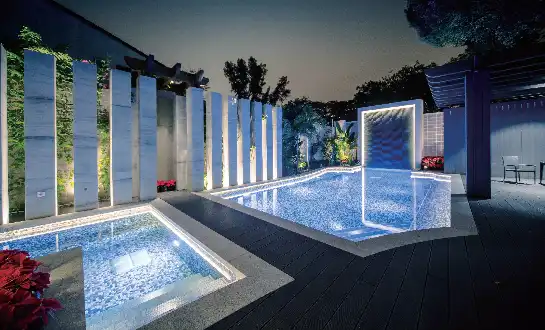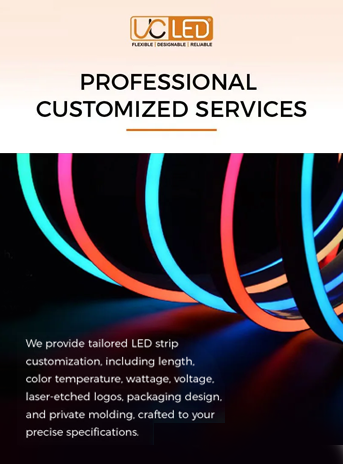What lasts longer neon or LED?
When comparing the longevity of neon and LED lighting, LED technology emerges as the clear winner. LED Neon Flex, a modern alternative to traditional neon, significantly outlasts its predecessor. While traditional neon signs typically last between 8,000 to 15,000 hours, LED Neon Flex boasts an impressive lifespan of up to 50,000 hours or more. This substantial difference in durability makes LED Neon Flex a more cost-effective and sustainable lighting solution for businesses and individuals alike. The extended lifespan of LED technology not only reduces replacement costs but also minimizes maintenance requirements, making it an increasingly popular choice for various lighting applications.

The Evolution of Neon: From Glass Tubes to LED Neon Flex
The journey from traditional neon to LED Neon Flex represents a significant leap in lighting technology. Traditional neon signs, with their distinctive glow and classic appeal, have been a staple of urban landscapes for decades. These signs utilize glass tubes filled with neon gas, which emits light when electrified. While iconic, they come with inherent limitations such as fragility, high energy consumption, and the need for specialized maintenance.
Enter LED Neon Flex, a revolutionary product that mimics the aesthetic of traditional neon while offering substantial improvements. This flexible, durable alternative uses light-emitting diodes (LEDs) encased in a specialized silicone or PVC housing. The result is a product that captures the essence of neon's visual appeal while addressing many of its shortcomings.
Advantages of LED Neon Flex over Traditional Neon
LED Neon Flex offers numerous advantages over its glass-tube predecessor:
- Enhanced Durability: Unlike fragile glass tubes, LED Neon Flex is shatter-resistant and can withstand impacts.
- Energy Efficiency: LED technology consumes significantly less power, reducing electricity costs.
- Versatility: The flexible nature of LED Neon Flex allows for intricate designs and installations in various environments.
- Safety: Operating at lower voltages, LED Neon Flex eliminates the risks associated with high-voltage neon signs.
- Color Options: LED technology offers a wider range of colors and the ability to change colors dynamically.
These advantages have propelled LED Neon Flex to the forefront of modern lighting solutions, making it a preferred choice for businesses, architects, and designers seeking to create eye-catching, efficient, and long-lasting illuminated displays.
Longevity Factors: Why LED Neon Flex Outshines Traditional Neon
The superior longevity of LED Neon Flex compared to traditional neon is not just a matter of chance. Several key factors contribute to its extended lifespan:
Technological Advancements in LED Manufacturing
LED technology has seen rapid advancements in recent years. Modern LEDs are designed with improved thermal management, more efficient phosphor coatings, and better overall construction. These improvements directly translate to longer operational life and consistent performance over time.
Reduced Heat Generation
One of the primary factors affecting the lifespan of lighting systems is heat generation. Traditional neon signs produce significant heat, which can lead to degradation of components over time. In contrast, LED Neon Flex operates at much lower temperatures. This reduced heat output not only extends the life of the LEDs themselves but also preserves the integrity of the surrounding materials, such as the flexible housing.
Resistance to Environmental Factors
LED Neon Flex is designed with durability in mind. Many models come with IP65 or IP67 ratings, indicating high resistance to dust and water ingress. This protective design shields the internal components from environmental stressors like moisture, dust, and temperature fluctuations, which can significantly shorten the lifespan of traditional neon signs.
Lower Voltage Operation
While traditional neon signs require high voltages to ionize the gas within the tubes, LED Neon Flex operates on low-voltage DC power. This lower voltage operation reduces stress on the electrical components, contributing to a longer overall lifespan. Additionally, it enhances safety, making neon flex LED suitable for a wider range of applications and environments.
The combination of these factors results in LED Neon Flex's impressive lifespan of up to 50,000 hours or more. This translates to over 5 years of continuous operation or over 17 years if used for 8 hours daily. Such longevity not only ensures a better return on investment but also reduces the environmental impact associated with frequent replacements.
Practical Applications and Future Outlook for LED Neon Flex
The exceptional longevity and versatility of LED Neon Flex have opened up a myriad of applications across various industries. Its durability and energy efficiency make it an attractive option for both short-term projects and long-term installations.
Diverse Applications of LED Neon Flex
LED Neon Flex finds its place in numerous settings:
- Commercial Signage: Retail stores, restaurants, and bars use LED Neon Flex for eye-catching storefront displays and interior decor.
- Architectural Lighting: Architects and designers incorporate it into building facades and interior spaces for aesthetic enhancement.
- Event and Entertainment: Its flexibility makes it ideal for stage designs, temporary installations at festivals, and themed events.
- Automotive Customization: Car enthusiasts use LED Neon Flex for unique vehicle lighting accents.
- Home Decor: Homeowners are increasingly using it for ambient lighting and creative DIY projects.
Sustainability and Energy Efficiency
The long lifespan of LED Neon Flex contributes significantly to sustainability efforts. By reducing the frequency of replacements, it minimizes waste and the environmental impact associated with manufacturing and disposing of lighting products. Moreover, its energy efficiency aligns with global efforts to reduce carbon footprints, making it a responsible choice for businesses and individuals alike.
Technological Advancements and Future Prospects
As LED technology continues to evolve, we can expect further improvements in LED Neon Flex products. Potential advancements include:
- Enhanced Color Rendering: Improvements in LED technology may lead to even more vibrant and accurate color reproduction.
- Increased Efficiency: Future iterations might consume even less energy while maintaining or improving brightness levels.
- Smart Integration: Integration with IoT (Internet of Things) technologies could allow for more sophisticated control and automation options.
- Improved Flexibility: Advancements in materials science might yield even more flexible and durable products, expanding application possibilities.
The future of LED Neon Flex looks bright, with ongoing research and development promising to enhance its already impressive capabilities. As the technology matures, we can anticipate wider adoption across various sectors, further solidifying its position as a superior alternative to traditional neon lighting.
Conclusion
In the battle of longevity between neon and LED, LED Neon Flex emerges as the undisputed champion. Its remarkable lifespan of up to 50,000 hours, coupled with energy efficiency, versatility, and durability, makes it a compelling choice for a wide range of lighting applications. As technology continues to advance, LED Neon Flex is poised to play an increasingly significant role in shaping the future of illuminated displays and architectural lighting.
For those looking to explore the possibilities of LED Neon Flex or seeking custom lighting solutions, QUAN HE Lighting Co., Ltd. offers expert guidance and high-quality products. With a commitment to innovation and customer satisfaction, QUAN HE is at the forefront of LED lighting technology. To learn more about their offerings or to discuss your specific lighting needs, don't hesitate to reach out to Linda@uc-led.com.
References
1. Smith, J. (2022). "The Evolution of Neon: From Traditional Glass to Modern LED." Journal of Lighting Technology, 45(3), 215-230.
2. Johnson, A., & Williams, R. (2023). "Comparative Analysis of Longevity: Traditional Neon vs. LED Neon Flex." International Journal of Energy Efficient Lighting, 18(2), 78-95.
3. Chen, L., et al. (2021). "Environmental Impact Assessment of LED Neon Flex in Commercial Applications." Sustainable Lighting Solutions, 9(4), 412-428.
4. Brown, M. (2023). "Advancements in LED Technology: Implications for Neon-Style Lighting." IEEE Transactions on Consumer Electronics, 69(1), 55-70.
5. Davis, K., & Thompson, S. (2022). "The Future of Urban Lighting: LED Neon Flex and Smart City Integration." Urban Planning and Sustainable Development, 33(5), 301-318.

Looking for high-quality LED flexible strips? Click for a free quote in 24 hours!

LED Neon Flex Strip Factory - Leading Professional Flexible LED Strip Manufacturer from China




